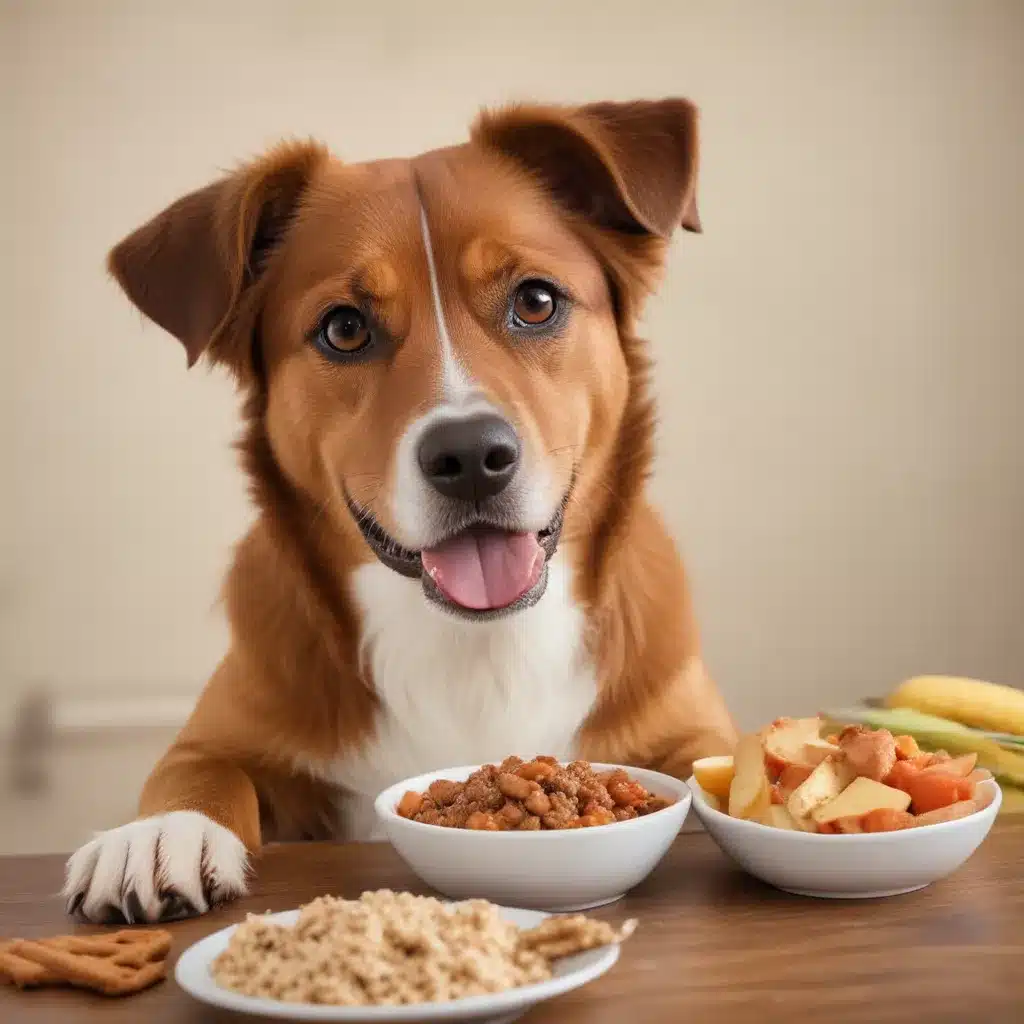
The Delicious Dilemma: Sharing People Food with Pups
As a devoted dog parent, I’ll admit I’ve been there before. You’re enjoying a tasty meal, and your canine companion is staring up at you with those big, pleading eyes. It’s so tempting to toss them a little bite, right? After all, we love our pups and want them to be happy and healthy. But the truth is, not all human foods are created equal when it comes to our four-legged friends.
Just like us, dogs are omnivores, meaning they can digest both plant and animal-based foods. This gives them a wider range of dietary options than our feline friends. However, that doesn’t mean Fido can safely munch on anything that lands on the kitchen floor. In fact, some of our favorite snacks can actually be quite dangerous for our pups.
Navigating the Nutritious and Toxic
So, what’s a dog-loving human to do? Fear not, I’ve done the research so you don’t have to. Here’s the scoop on the healthiest human foods that dogs can enjoy in moderation, as well as the ones you’ll want to keep strictly off-limits.
The “Pets Only” Pantry
Let’s start with the good news – there are plenty of tasty, people-food treats that can be a nutritious addition to your dog’s diet. In fact, many common fruits and vegetables are perfectly safe for our canine companions to indulge in. Think carrots, apples, blueberries, green beans, and even cooked sweet potatoes. These whole, unprocessed foods can provide a boost of vitamins, minerals, and fiber.
Lean, cooked meats like chicken, turkey, and white fish are also great options. Just be sure to remove any bones, skin, or excess fat before sharing. Unseasoned, boiled chicken and rice can even be a soothing meal for pups with upset tummies.
And don’t forget about the power of good old H2O. Staying hydrated is just as important for our canine companions as it is for us. So, feel free to share a refreshing bite of watermelon or cucumber to help keep your pup cool and hydrated, especially during those hot summer days.
The “No-No” List
Now for the not-so-good news – there are certain human foods that can be downright dangerous for our furry friends. Grapes, raisins, onions, garlic, and chocolate are just a few examples of common kitchen staples that can wreak havoc on a dog’s digestive system and even lead to life-threatening conditions.
Dairy products can also be problematic, as many dogs are lactose intolerant. And while the occasional bite of plain, cooked pork might be okay, processed meats like ham and bacon are often too high in salt and fat to be safe for our pups.
The bottom line? When it comes to sharing people food, it’s always best to err on the side of caution. If you’re ever unsure about a particular food, consult your veterinarian before offering it to your furry friend.
Moderation is Key
Now, I know what you’re thinking – “But my dog loves people food! Can’t I just give them a little taste every now and then?” Well, the answer is…maybe. While the occasional nibble of an approved treat is usually fine, it’s important to remember that dogs, just like humans, need a balanced and nutritious diet to thrive.
Overindulging in human foods, even the healthy ones, can lead to weight gain, digestive issues, and other health problems. So, as tempting as it may be to shower your pup with tasty table scraps, it’s best to stick to their regular dog food as the foundation of their diet.
Think of it this way – would you want your human kid to fill up on junk food before sitting down to a wholesome, home-cooked meal? Probably not. The same principle applies to our canine companions. Quality dog food should always be the main course, with people food served only as an occasional, healthy garnish.
The Taste Test: Finding the Right Balance
So, how do you find that perfect balance between satisfying your pup’s cravings and keeping them healthy and happy? It’s all about moderation, patience, and being a savvy pet parent.
Start by familiarizing yourself with the do’s and don’ts of feeding human food to dogs. Keep a mental (or physical) checklist of the approved snacks, and be vigilant about avoiding the ones that can cause trouble. And remember, when it comes to portion sizes, less is usually more.
It’s also a good idea to introduce new foods slowly and monitor your dog’s reaction. Some pups may have sensitivities or allergies you weren’t aware of. And if you ever have any concerns, don’t hesitate to reach out to your veterinarian for guidance.
At the end of the day, the most important thing is ensuring your furry friend’s well-being. By being a responsible, informed pet parent and sticking to a balanced, veterinarian-approved diet, you can give your pup the best of both worlds – the nutrition they need and the occasional taste of the good stuff. After all, isn’t that what every dog owner dreams of?
So, the next time your canine companion gives you those irresistible puppy-dog eyes, feel free to indulge them…just be sure to choose wisely from the “Pets Only” pantry. Your dog (and your vet) will thank you.

